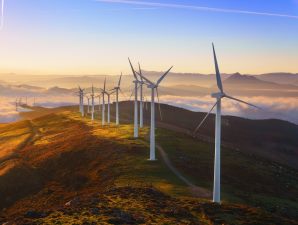The electricity market report confirms that over the last few years electricity consumption in the EU has clearly been decoupled from economic growth. The EU’s GDP increased by almost 12% between 2010 and the end of 2017; over the same period, electricity consumption decreased by 4%. Moreover, in December 2017 more energy from wind was generated in the EU than ever before: 41 TWh (terawatt hours), equivalent to 16% of the EU’s electricity mix.
In the fourth quarter of 2017 wholesale electricity prices in the EU were generally higher compared with the previous quarter. This was caused by higher seasonal demand at the beginning of the winter period and increasing use of fossil fuels in power generation, as significant nuclear capacities were taken out of use in France, either due to maintenance works or to safety inspections. Retail electricity prices for household customers were also up by almost 5% in December 2017 in EU capital cities on average in a year-on-year comparison, primarily owing to increased energy supply costs, reflecting the evolution of wholesale electricity prices.
The gas market report shows that, despite a slight year-on-year decrease in the last quarter of the year, in 2017 EU gas consumption was 491 bcm (billion cubic metres), 6% more than in 2016 and the highest level since 2010. In December Europe received its first cargo from Novatek's new Yamal LNG (liquid natural gas) facility which means that, for the first time, a company other than Gazprom supplied Russian gas to the EU. Although high prices in Asia driven by surging Chinese demand made Europe a less attractive destination for LNG supplies, EU LNG imports increased by 16% year-on-year in the last quarter of 2017. An explosion at the Baumgarten hub in Austria, coupled with a disruption of the Forties pipeline system in the UK, sent European hub prices soaring in mid-December but the outage was quickly resolved.
01 Января 2026 | четверг | 15:23


